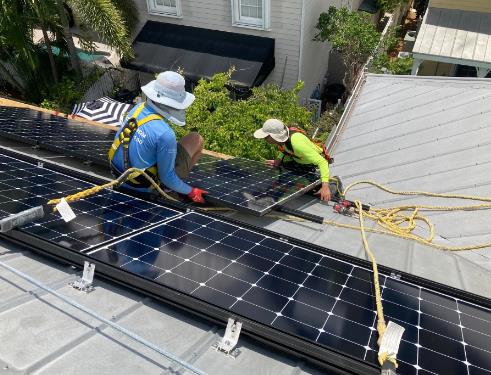Optimizing Solar: What's the Best Roof Pitch?
In the quest for renewable energy solutions, solar panels stand out as a beacon of sustainability and efficiency. Yet, the effectiveness of a solar panel system hinges not just on the technology itself but also on the characteristics of the surface it calls home. A pivotal aspect? The pitch of the roof. Let’s get into the nitty-gritty of why roof pitch matters and how to pinpoint the ideal angle for your solar panels.

Understanding Roof Pitch
First off, roof pitch refers to the steepness or angle of a roof. It’s typically expressed as a ratio of vertical rise to horizontal run. For solar panel installations, finding the sweet spot in terms of roof pitch can significantly amplify the system's ability to capture sunlight, thereby enhancing overall efficiency.
The Golden Angle
So, what's the best roof pitch for solar panels? Research and real-world applications suggest that a pitch of 30 to 45 degrees hits the mark for maximizing solar energy absorption in most climates. This range ensures that panels are well-positioned to soak up the sun’s rays throughout the year, from the low angles of winter to the high sun of summer.
Adjusting for Latitude
It's worth noting that the optimal pitch can vary based on geographic location. A useful guideline is to match the roof pitch to the local latitude for a good starting point. For instance, if you're located at a latitude of 35 degrees, setting your roof pitch around 35 degrees can yield excellent results. However, tweaking this angle to account for seasonal shifts can offer further gains. In areas far from the equator, tilting panels a bit more steeply than the local latitude can capture more of the low-hanging winter sun.
Flat Roofs: A Special Case
What if your roof is flat? Fear not. Flat roofs offer the flexibility to install solar panels on mounts that can be angled optimally. This way, you can achieve the ideal pitch even if the original roof design doesn’t naturally provide it.
Impact of Roof Pitch on Performance
Studies demonstrate that deviating from the optimal pitch can result in performance drops. However, it’s not all doom and gloom if your roof's pitch isn’t perfect. A deviation of about 15 degrees from the ideal angle usually results in a relatively small efficiency loss, often around 5% or less. The takeaway? While it's beneficial to aim for the ideal roof pitch, slight variations don’t spell disaster for your solar aspirations.
A Strategic Approach to Solar Installation
Choosing the right roof pitch for your solar panels isn’t just about sticking to a universal formula. It involves considering your specific location, seasonal variations, and the unique characteristics of your property. Consulting with solar installation experts can provide personalized insights, ensuring your setup is fine-tuned for optimal performance.
For those pondering what type of roof is best for solar panels, remember that while the material and durability are crucial, the pitch of your roof plays a starring role in your solar system’s success. Whether you’re retrofitting an existing roof or designing a new eco-friendly abode, paying close attention to the angle of your solar array can significantly boost your green energy output, paving the way for a brighter, more sustainable future.
